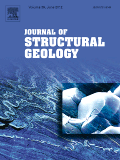
JOURNAL OF STRUCTURAL GEOLOGY
Scope & Guideline
Exploring the Dynamics of Geological Formations.
Introduction
Aims and Scopes
- Tectonic Processes and Structural Evolution:
The journal emphasizes research on the mechanisms of tectonic processes, including faulting, folding, and the evolution of geological structures over time. Studies often incorporate field observations, theoretical modeling, and experimental approaches to understand these complex processes. - Integration of Multiscale Approaches:
A key feature of the journal is the integration of multiscale analyses, combining microstructural studies with larger geological frameworks. This includes the use of advanced imaging techniques and numerical modeling to explore structural characteristics across various scales. - Geological Mapping and Characterization Techniques:
The journal publishes research on innovative geological mapping and characterization techniques, including digital mapping, UAV surveys, and ground-penetrating radar. These methods enhance the understanding of subsurface structures and their implications for geological hazards. - Fluid-Structural Interactions:
There is a strong focus on the interactions between fluids and geological structures, particularly in the context of fault zones and deformation bands. Studies explore how fluid movement affects structural integrity and contributes to seismic activity. - Natural Hazards and Risk Assessment:
Research often addresses the implications of structural geology for natural hazards, including earthquakes and landslides. This includes the assessment of fault systems, stress fields, and their potential impacts on human activities and infrastructure.
Trending and Emerging
- Digital and Remote Sensing Techniques:
Recent publications show a marked increase in the use of digital mapping, UAV surveys, and remote sensing techniques for geological studies. This trend reflects a broader move towards utilizing technology to enhance data collection and analysis in structural geology. - Interdisciplinary Research:
There is a growing trend towards interdisciplinary research that combines structural geology with other fields such as geophysics, geochemistry, and environmental sciences. This approach facilitates a more holistic understanding of geological processes and their implications. - Focus on Natural Hazards and Risk Mitigation:
An increasing number of studies are addressing the implications of structural geology for natural hazards, emphasizing the need for risk assessment and mitigation strategies. This is particularly relevant in the context of climate change and urban development. - Microstructural Analysis and Experimental Studies:
The journal is seeing a rise in studies utilizing microstructural analysis and experimental methods to understand deformation mechanisms at the mineral and rock levels. This trend supports a deeper understanding of the processes driving geological changes. - Integration of Geomechanics and Structural Analysis:
Emerging research increasingly integrates geomechanical principles with structural geology to better understand the behavior of geological materials under stress. This is crucial for applications in resource extraction and geological hazard assessment.
Declining or Waning
- Traditional Geological Mapping:
There seems to be a decline in studies focused solely on traditional geological mapping techniques without integrating modern technologies. As digital mapping and advanced imaging techniques gain traction, conventional methods may not be emphasized as much. - Purely Theoretical Approaches:
Research that relies solely on theoretical modeling without empirical validation or field data is becoming less common. The trend is moving towards more integrative studies that combine theory with practical observations. - Regional Studies without Global Context:
There is a noticeable decrease in publications focusing solely on localized geological studies without broader implications or connections to global tectonics. The journal increasingly favors research that situates local findings within larger geological frameworks.
Similar Journals
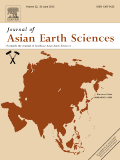
JOURNAL OF ASIAN EARTH SCIENCES
Transforming Earth Sciences through Asian PerspectivesJOURNAL OF ASIAN EARTH SCIENCES, published by Pergamon-Elsevier Science Ltd, is a premier international journal dedicated to advancing the understanding of Earth Sciences, particularly within the vibrant and diverse geological landscapes of Asia. With an esteemed Impact Factor reflective of its robust scholarship, the journal is currently categorized in the Q1 quartile for both Earth-Surface Processes and Geology, highlighting its significant contribution to these fields. Researchers can access cutting-edge research spanning geophysical studies, geological formations, and environmental changes via the journal’s Open Access model, ensuring a broad dissemination of knowledge. As the journal converges its focus from 1997 to 2024, it continues to serve as a critical platform for scholars, professionals, and students aiming to explore the unique challenges and opportunities present in Asian Earth sciences. Its commendable rankings of 28th out of 179 in Earth-Surface Processes and 52nd out of 321 in Geology, demonstrate its influence and relevance in the academic community.
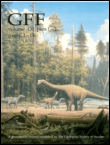
GFF
Advancing Earth Sciences Through Rigorous Research.GFF is a prestigious academic journal dedicated to advancing research in the fields of Geology and Paleontology. Published by Taylor & Francis Ltd in the United Kingdom, GFF serves as a vital platform for disseminating innovative findings and fostering discussions among researchers, professionals, and students alike. With a noteworthy impact factor reflecting its significance in the scientific community, GFF has achieved Q2 ranking in both Geology and Paleontology, underscoring its commitment to high-quality scholarship. The journal has been operational since 1872, accumulating a rich history of contributing to our understanding of earth sciences. It currently ranks #133 out of 321 in Earth and Planetary Sciences - Geology, and #50 out of 113 in Paleontology according to Scopus rankings. Although it does not offer an open access option, GFF remains accessible through various academic databases, ensuring that cutting-edge research reaches a wide audience. Its comprehensive scope aims to explore critical advancements in geological and paleontological sciences, making it an essential resource for those committed to exploring the intricacies of our planet’s past and present.

REVISTA MEXICANA DE CIENCIAS GEOLOGICAS
Bridging Cultures through Geological ResearchREVISTA MEXICANA DE CIENCIAS GEOLOGICAS, published by the CENTRO GEOCIENCIAS UNAM, is a pivotal open-access journal in the field of geology since its inception in 1975. With an ISSN of 1026-8774 and an E-ISSN of 2007-2902, this journal plays a vital role in disseminating research findings that contribute to the understanding of geological processes, resources, and environmental challenges, particularly within a Latin American context. Although currently categorized in the Q4 quartile and ranked 244 out of 321 in the Earth and Planetary Sciences category on Scopus, the journal strives to increase its impact through rigorous peer-reviewed articles that emphasize innovative geological research. As a comprehensive resource for researchers, professionals, and students alike, REVISTA MEXICANA DE CIENCIAS GEOLOGICAS seeks to foster collaboration and knowledge exchange in the geosciences while promoting accessibility to vital information in Mexico and beyond. The journal accepts submissions in both English and Spanish, catering to a diverse audience and encouraging a wider dissemination of geological research. Explore the eclectic array of studies published from 1996 to 2024, as the journal continues to elevate and enrich the field of geology.

Geosphere
Advancing Earth Sciences through Open Access InnovationGeosphere is a premier open access journal published by the Geological Society of America, Inc., dedicated to advancing the fields of geology and stratigraphy. Since its inception in 2005, this journal has established itself as a critical platform for sharing high-quality research, evidenced by its robust positioning in the 2023 Scopus rankings, where it holds the 12th rank in stratigraphy and 75th in geology. With an impressive impact factor and a commitment to open access since 2018, Geosphere facilitates the dissemination of significant findings to a global audience, making it an essential resource for researchers, professionals, and students alike. The journal's scope includes a wide range of topics related to Earth and Planetary Sciences, encouraging interdisciplinary collaboration and innovation. Based in the United States, Geosphere continues to foster a community dedicated to understanding the Earth's processes and resources, ensuring that it remains at the forefront of geological research.
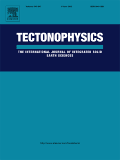
TECTONOPHYSICS
Connecting Science and Innovation in Earth SciencesTECTONOPHYSICS is a leading journal published by Elsevier that has been at the forefront of earth and planetary sciences since its inception in 1964. With both its print and e-ISSN identifiers (0040-1951 and 1879-3266), the journal offers a reputable platform for disseminating high-quality research in Earth-Surface Processes and Geophysics, proudly positioned in the Q1 category for both fields in 2023. With a Scopus ranking of #43 out of 179 in Earth-Surface Processes and #43 out of 165 in Geophysics, TECTONOPHYSICS demonstrates a strong impact, making it an essential resource for researchers and professionals involved in the geological and geophysical sciences. Published in the Netherlands, TECTONOPHYSICS is committed to advancing knowledge in tectonics and related disciplines, fostering innovative research that impacts our understanding of Earth's dynamic processes. The journal invites contributions that push the boundaries of science, making it a must-read for academia and industry alike.

ANNALES SOCIETATIS GEOLOGORUM POLONIAE
Illuminating the Depths of Earth Sciences.ANNALES SOCIETATIS GEOLOGORUM POLONIAE is a distinguished journal published by the Polish Geological Society, focusing on pivotal research in the fields of geology, economic geology, and stratigraphy. With an ISSN of 0208-9068, this journal has established itself as an essential platform for disseminating significant findings and advancements in geological sciences since its convergence in 2008. The journal proudly holds a Q2 quartile ranking in the categories of Economic Geology, Geology, and Stratigraphy as of 2023, indicating its respectable position within the global academic community. Researchers will find its indexed status in Scopus, ranking #138/321 in Geology and showcasing a solid presence in key geological sub-disciplines. While the journal is not open access, it remains a vital resource for professionals and students striving for insight into contemporary geological research. Located in Krakow, Poland, the journal continues to contribute significantly to the understanding of geological processes and resources, making it an indispensable reference for anyone in the field.
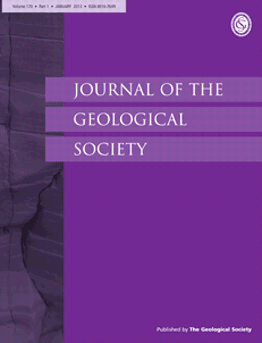
JOURNAL OF THE GEOLOGICAL SOCIETY
Connecting Scholars to the Heart of GeologyJOURNAL OF THE GEOLOGICAL SOCIETY, published by GEOLOGICAL SOC PUBL HOUSE, is a premier academic journal dedicated to advancing the field of geology. With a rich history dating back to 1845 and continuously published until 2024, this journal caters to a diverse audience of researchers, professionals, and students involved in earth sciences. The journal is recognized for its high impact factor, situating it in the top Q1 category in the field of geology, as indicated by its impressive Scopus rank of #49 out of 321, positioning it at the 84th percentile in Earth and Planetary Sciences. This esteemed scholarly platform promotes rigorous peer-reviewed research, ensuring that novel findings contribute to the global geological discourse. Although it operates under a subscription model, the journal's archive offers valuable insights for anyone pursuing excellence in geological research. The JOURNAL OF THE GEOLOGICAL SOCIETY stands as a vital resource for disseminating scientific knowledge and fostering educational growth within the field.

Journal of the Geological Society of Korea
Pioneering Discoveries in the Geological CommunityJournal of the Geological Society of Korea, published by the Geological Society of Korea, is a pivotal platform for researchers and professionals in the field of geology and earth sciences. With an ISSN of 0435-4036 and an E-ISSN of 2288-7377, this journal fosters the dissemination of scholarly articles that encompass a wide range of topics within earth and planetary sciences. Despite being categorized as Q3 in both Earth and Planetary Sciences (miscellaneous) and Geology, the journal has made significant strides in contributing to academic discourse, with a Scopus rank indicating robust participation in its academic field. Located in Seoul, South Korea, the journal aims to provide a comprehensive resource for the geological community, inviting submissions from both Korean and international researchers alike. With the convergence of years from 2019 to 2024, the Journal of the Geological Society of Korea stands as a vital resource for advancing our understanding of geological phenomena and fostering collaboration within the global geosciences community.

Acta Geodynamica et Geomaterialia
Unveiling Innovations in Geodynamics and GeomaterialsActa Geodynamica et Geomaterialia is a well-regarded journal published by the Academy of Sciences of the Czech Republic, Institute of Rock Structure and Mechanics. Since its inception in 2004, this journal has established itself as a vital resource within the realms of Geology, Geophysics, and Geotechnical Engineering, categorized in the Q3 quartile across these fields as of 2023. With a focus on innovative research that addresses complex Earth dynamics and material behavior, it provides a platform for scholars and professionals to disseminate their findings and foster academic discourse. The journal holds an important position in the academic landscape, particularly for those engaged in interdisciplinary studies bridging geology and engineering. Although it is not an open access publication, its content remains pivotal for advancing knowledge and practices within these areas, making it an essential read for researchers and students alike. The journal's operational address is located in the vibrant city of Prague, Czech Republic, further enriching its academic character.

GEOLOGIA CROATICA
Championing Open Access in Earth SciencesGEOLOGIA CROATICA is a distinguished open-access journal published by the Croatian Geological Survey, dedicated to advancing the field of Earth and planetary sciences. Since its inception in 1992, this peer-reviewed journal has become an essential resource for researchers, professionals, and students interested in various aspects of geology. With its robust impact factor and a prestigious place in Scopus rankings, ranking 127th out of 321 in Geology and 77th out of 159 in miscellaneous Earth and Planetary Sciences as of 2023, GEOLOGIA CROATICA maintains a strong international presence. It provides a platform for the dissemination of critical research findings, promoting collaboration and knowledge sharing among the global scientific community. By focusing on high-quality manuscripts that cover geological processes, hazards, and resources, this journal is pivotal for anyone looking to contribute to or expand their understanding of geological sciences. The journal's commitment to open access ensures that invaluable research is accessible to all, fostering a more informed and scientifically engaged society.